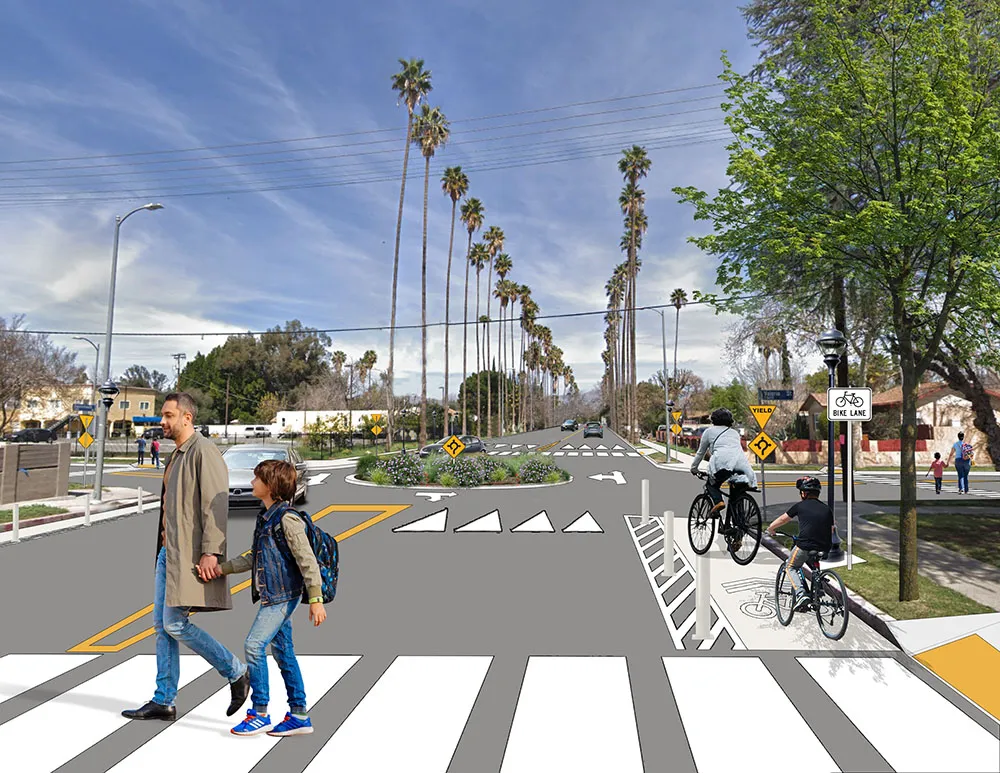Five years after the Non-motorised Transportation Pilot Program (NTPP) was established to measure the impact of investment in walking and cycling initiatives, the US Federal Highway Administration (FHWA) has reported a 22.8 per cent increase in walking and a 48.3 per cent increase in cycling, while an estimated 85.1 million vehicle miles were avoided.
The NTPP provided approximately US$25 million each to four pilot communities (Columbia, Missouri; Marin County, California; Minneapolis area, Minnesota; an
June 30, 2014
Read time: 3 mins
Five years after the Non-motorised Transportation Pilot Program (NTPP) was established to measure the impact of investment in walking and cycling initiatives, the US 831 Federal Highway Administration (FHWA) has reported a 22.8 per cent increase in walking and a 48.3 per cent increase in cycling, while an estimated 85.1 million vehicle miles were avoided.
The NTPP provided approximately US$25 million each to four pilot communities (Columbia, Missouri; Marin County, California; Minneapolis area, Minnesota; and Sheboygan County, Wisconsin) for pedestrian and cycle infrastructure and non-motorised programs.
As of late 2013, the four NTPP pilot communities collectively committed US$88.5 million of NTPP funds to non-motorised transportation projects or programs in: Bicycle parking investments; On-street infrastructure projects; Off-street infrastructure projects; Projects with both on-street and off-street components, including those with sidewalk improvements and on-street bicycle lanes; and outreach, education, and marketing to promote walking and bicycling.
The funding enabled Columbia to reconfigure a key commuter intersection to make walking and cycling easier and safer, resulting in a 51 per cent jump in walking rates and a 98 per cent jump in biking at that location. Marin County reconstructed the 1,100-foot Cal Park railroad tunnel and built a 1.1 mile walking and cycling path to provide direct access to commuter ferry service to downtown San Francisco and reduced cycling time between the cities of San Rafael and Larkspur by 15 minutes. Cycling along the corridor increased 95 per cent.
The program enabled the start of the Nice Ride bike-share system in Minneapolis, which grew to 170 stations and 1,556 bicycles by 2013, with 305,000 annual trips. In Sheboygan County, the ReBike program distributed cycles to more than 700 people and a new 1.7-mile multi-use path was built.
Despite large increases in non-motorised transportation, the pilot communities collectively observed a 20 per cent decline in the number of pedestrian fatalities and a 28.6 per cent decline in the number of bicycle fatalities from 2002 to 2012. Similarly, over the same time period, three of the communities experienced declines in the number of pedestrian injuries and pedestrian injury rates declined between 17.9 per cent and 55.1 per cent in each of the four communities. Bicycle injuries increased in three of the four communities, but cycling injury rates (incidents per number of trips) declined between 8.6 and 38.2 per cent in each of the four communities.
According to the FHWA: “Since authorisation of the NTPP in 2005, interest and investment in non motorised transportation has grown dramatically around the country. Walking and bicycling as transportation, once the purview of a few US cities and a peripheral issue for transportation practitioners, is increasingly a focus for policymakers, planners, and engineers throughout the US. With increasing emphasis on creating more liveable communities, the public has grown to expect walking and bicycling options within the transportation system that are safe, equitable, environmentally sustainable, and economically efficient.”
The NTPP provided approximately US$25 million each to four pilot communities (Columbia, Missouri; Marin County, California; Minneapolis area, Minnesota; and Sheboygan County, Wisconsin) for pedestrian and cycle infrastructure and non-motorised programs.
As of late 2013, the four NTPP pilot communities collectively committed US$88.5 million of NTPP funds to non-motorised transportation projects or programs in: Bicycle parking investments; On-street infrastructure projects; Off-street infrastructure projects; Projects with both on-street and off-street components, including those with sidewalk improvements and on-street bicycle lanes; and outreach, education, and marketing to promote walking and bicycling.
The funding enabled Columbia to reconfigure a key commuter intersection to make walking and cycling easier and safer, resulting in a 51 per cent jump in walking rates and a 98 per cent jump in biking at that location. Marin County reconstructed the 1,100-foot Cal Park railroad tunnel and built a 1.1 mile walking and cycling path to provide direct access to commuter ferry service to downtown San Francisco and reduced cycling time between the cities of San Rafael and Larkspur by 15 minutes. Cycling along the corridor increased 95 per cent.
The program enabled the start of the Nice Ride bike-share system in Minneapolis, which grew to 170 stations and 1,556 bicycles by 2013, with 305,000 annual trips. In Sheboygan County, the ReBike program distributed cycles to more than 700 people and a new 1.7-mile multi-use path was built.
Despite large increases in non-motorised transportation, the pilot communities collectively observed a 20 per cent decline in the number of pedestrian fatalities and a 28.6 per cent decline in the number of bicycle fatalities from 2002 to 2012. Similarly, over the same time period, three of the communities experienced declines in the number of pedestrian injuries and pedestrian injury rates declined between 17.9 per cent and 55.1 per cent in each of the four communities. Bicycle injuries increased in three of the four communities, but cycling injury rates (incidents per number of trips) declined between 8.6 and 38.2 per cent in each of the four communities.
According to the FHWA: “Since authorisation of the NTPP in 2005, interest and investment in non motorised transportation has grown dramatically around the country. Walking and bicycling as transportation, once the purview of a few US cities and a peripheral issue for transportation practitioners, is increasingly a focus for policymakers, planners, and engineers throughout the US. With increasing emphasis on creating more liveable communities, the public has grown to expect walking and bicycling options within the transportation system that are safe, equitable, environmentally sustainable, and economically efficient.”







